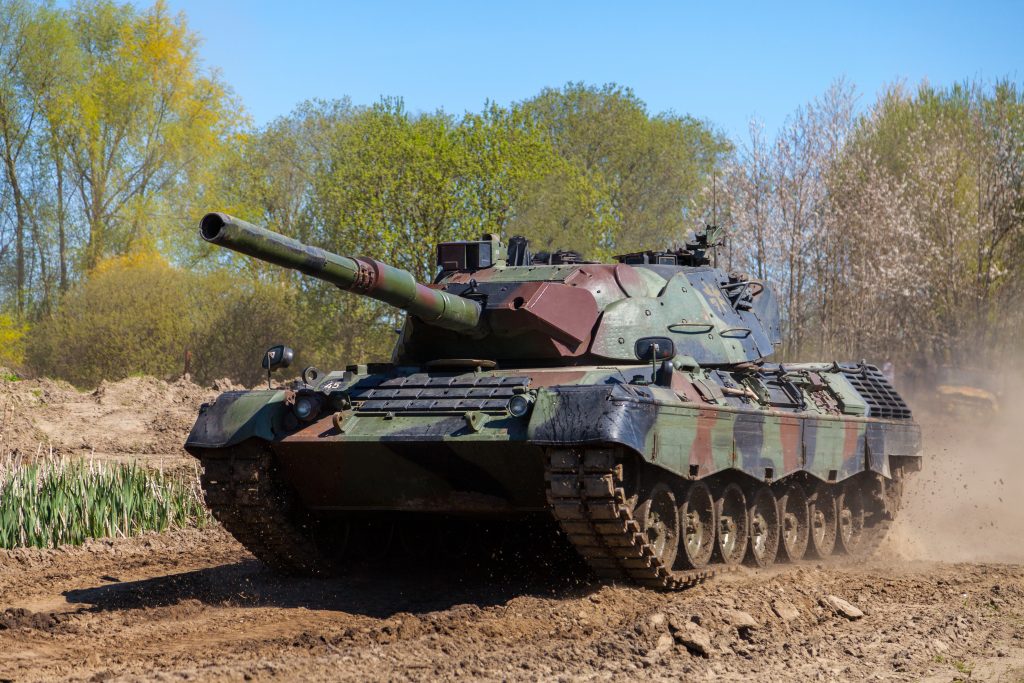Welcome to my deep dive into the Leopard 1, the first generation of the legendary Leopard tank series. In this comprehensive overview, I will explore the history, development, technical specifications, and variants of this iconic main battle tank (MBT) that played a pivotal role in shaping the future of armored warfare.
A Brief History of the Leopard 1
The story of the Leopard 1 begins in the late 1950s when West Germany, along with its NATO partners, recognized the need for a new main battle tank to counter the growing threat of the Soviet Union’s T-54 and T-55 tanks. The primary goal was to develop a tank that was lighter, faster, and more maneuverable than its predecessors while maintaining superior firepower and protection.
In 1956, Germany initiated a joint project with France, Italy, and other NATO countries called the Europanzer project. This project aimed to create a standardized tank for the NATO allies, but disagreements over design requirements and national interests eventually led to its disintegration. In 1957, Germany decided to develop its own tank, which later became the Leopard 1.

The Development of the Leopard 1
The development of the Leopard 1 was carried out by a consortium of German companies, including Porsche, Rheinmetall, and Wegmann & Co. The main priorities during the design process were to create a tank with excellent mobility, firepower, and reliability that could effectively operate on the diverse terrains of Western Europe.
The Leopard 1 entered service with the German Bundeswehr in 1965, marking the beginning of the Leopard tank legacy. Weighing around 42 tons and equipped with a 105mm L7A3 Royal Ordnance main gun, the Leopard 1 had a top speed of 65 km/h (40 mph). Its welded steel armor provided adequate protection against the threats of the time, but it was not as heavily armored as its contemporaries like the American M60 and the Soviet T-62.
Technical Specifications
The Leopard 1 was an impressive tank for its time, boasting a variety of features that made it a formidable presence on the battlefield. Here are the key technical specifications of the Leopard 1:
- Weight: Approximately 42 tons
- Length: 9.54 meters (31 ft 3 in), including the gun
- Width: 3.37 meters (11 ft 1 in)
- Height: 2.63 meters (8 ft 8 in)
- Crew: 4 (commander, gunner, loader, and driver)
- Main armament: 105mm L7A3 Royal Ordnance rifled gun
- Secondary armament: Two 7.62mm MG3 machine guns (one coaxial and one anti-aircraft)
- Engine: MTU MB 838 CaM 500 10-cylinder diesel engine, producing 830 horsepower
- Transmission: ZF 4HP-250 4-speed automatic
- Suspension: Torsion bar
- Operational range: 600 km (373 miles)
- Top speed: 65 km/h (40 mph) on-road, 45 km/h (28 mph) off-road
End of Production and Retirement
The production of the Leopard 1 came to an end in 1984, with over 6,000 units built in total. Although it was gradually replaced by the more advanced Leopard 2 in the German Bundeswehr and other armed forces, the Leopard 1 continued to serve in various capacities for many years.
In recent years, several countries have retired their Leopard 1 fleets, with some of the tanks being sold or donated to other nations, while others have been decommissioned and placed in museums or used as monuments.
Legacy of the Leopard 1
The Leopard 1 is a symbol of innovation and a testament to the importance of balancing firepower, protection, and mobility in armored warfare. Its success paved the way for the development of the Leopard 2, which remains one of the most advanced and capable main battle tanks in service today.
Although the Leopard 1 may have been retired from active service in many countries, its legacy will continue to be remembered and celebrated by military enthusiasts, historians, and collectors worldwide. The Leopard 1’s influence on modern tank design and its role in shaping the future of armored warfare ensures that it will always hold a special place in the annals of military history.
